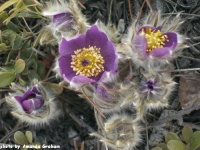Adaptation
All kinds of organisms are exposed to stresses and pressures which are characteristic for the local environment they are living in. In order to survive they need to adapt.
"Organisms that are adapted to their environment are able to:
- Obtain air, water, food and nutrients.
- Cope with physical conditions such as temperature, light and heat.
- Defend themselves from their natural enemies.
- Reproduce.
- Respond to changes around them."
(http://en.wikipedia.org/wiki/Adaptation)
Adaptation is a physiological process, anatomical structure or behavioural characteristic of an organism that has evolved by natural selection such that it increases the expected reproductive success of the organism. Adaptation is a slow process occurring over many generations. Organisms that are not adapted to their environment will either have to move out of the habitat or die out.
Physical adaptations are systems in an organism that allow it
to perform certain biochemistry reactions, for example being able
to keep a constant body temperature.
Structural adaptations are special body parts of an organism that
help it to survive, for example the colour of its fur.
Behavioural adaptations are special ways an organism behaves
to survive in its natural habitat.
Arctic plants and animals have developed many adaptations to survive the harsh climate. Species have to adapt both to the long, cold winter when food is limited and to the short and intense growing season. For example, most of the plants are small, grow close together and close to the ground, which protects them from the cold. They store energy and nutrients over the winter so that they can grow fast when spring arrives. Some species even start growing under the snow.
Following are some examples of plants growing in Arctic: "...purple saxifrage, mountain avens, wild crocus, arctic poppies, buttercups, cinquefoil, moss campion, campanulas, arctic azaleas and arctic lupine", "Other plants that grow there are mosses, grasses, herbs, lichens and small shrubs like the dwarf willow and arctic willow" (http://www.saskschools.ca/~gregory/arctic/Aplants.html)

The arctic crocus grows close to the ground and
is covered with hairs that protect it from the wind.
Snow is an excellent insulator and many animal species use it as shelter. Large animals have thicker fur or plumage for the winter and many species also change the colour of their fur/plumage between summer and winter. Some species have developed large feet for their body weight to help them move over the snow without sinking. Storing food during summer or accumulating large fat deposits helps species survive. Many animal species also spend the winter in torpor or hibernation.
Examples of Arctic animals: albatross, bald eagle, peregrine falcon, ptarmigan, puffin, snowy owl, arctic fox, caribou, reindeer, lemming, musk ox, beluga whale, orca, polar bear, sea otter, seal, walrus.

"Seals swim in Arctic waters eating fish like arctic
cod as well as crustaceans and mollusks. Their
rear flippers are turned backward. This improves
their swimming, but makes it difficult to move
around on land because their toes point
backwards."
(http://www.mnh.si.edu/arctic/html/seal.html)
Sources (and more examples):
http://en.wikipedia.org/wiki/Adaptation
http://www.saskschools.ca/~gregory/arctic/Aplants.html
http://www.mnh.si.edu/arctic/html/wildlife.html
Tiina Heikkilä
Comments (0)
You don't have permission to comment on this page.